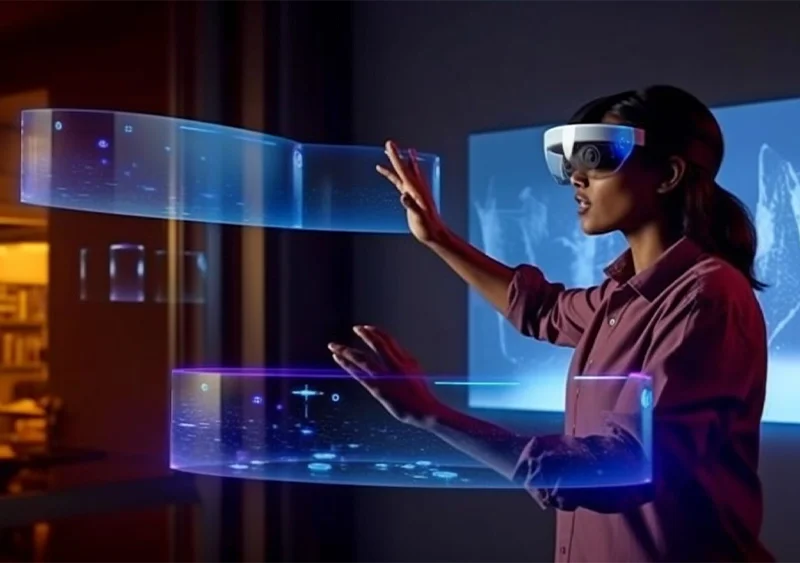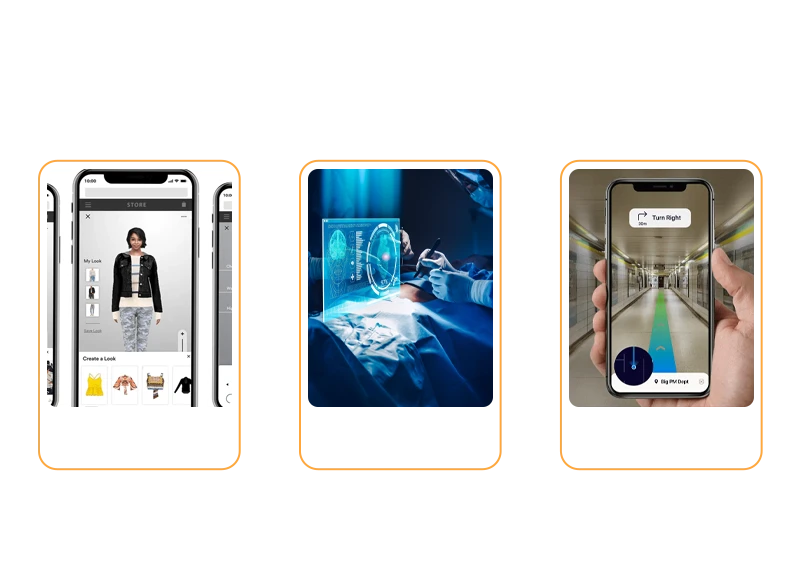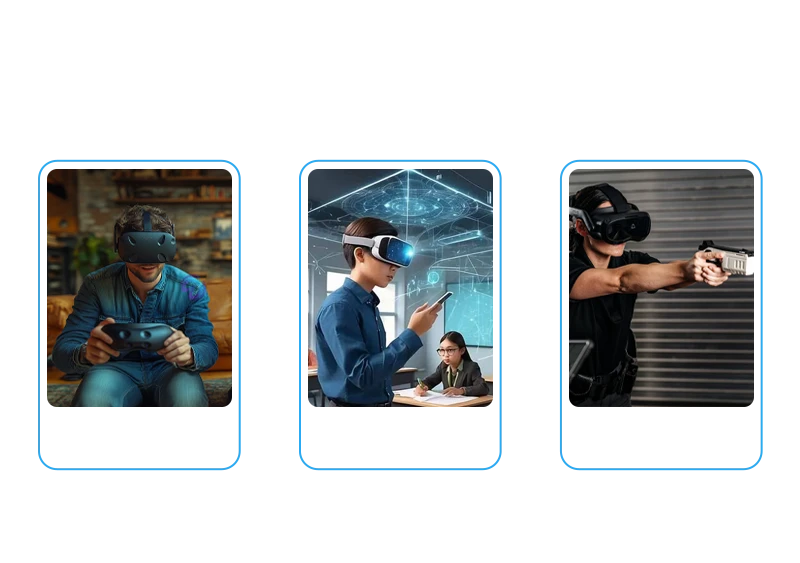What’s the Difference Between AR and VR? Simplified!
Learn how AR and VR Change the Way We Interact with Technology

5 MIN READ
Published November 18, 2024

Written By
Rahimudeen M
In this blog, we’ll simplify AR (Augmented Reality) and VR (Virtual Reality) and explain their key differences in a way that’s easy to understand.
Let’s get started and break down these futuristic technologies!
What is Augmented Reality (AR)?
AR (Augmented Reality) enhances your existing reality by adding digital elements to it. Think of it as a layer of information or graphics over the real world. For instance, remember playing Pokémon Go or using Snapchat filters? That’s AR in action.
It blends real-life environments with virtual objects or images, all while you stay in the real world. You can still see your surroundings, but now there’s an added layer of fun or information on top of it.
What is Virtual Reality (VR)?
VR (Virtual Reality), on the other hand, fully immerses you in a completely digital environment. It blocks out the physical world and transports you to a computer-generated space where you can interact with virtual surroundings.
With VR, you could find yourself on a roller coaster or exploring a fantasy world, all from your living room, thanks to VR headsets like Oculus Rift or PlayStation VR. Everything around you is digital, and you feel like you're part of that virtual world.
Key Differences Between AR and VR
Here’s a quick comparison to make it easy:
| Feature | AR (Augmented Reality) | VR (Virtual Reality) |
|---|---|---|
| Environment | Adds digital elements to the real world | Replaces the real world with a fully digital environment |
| Creativity | Limited to pre-existing data and patterns, formulaic. | Unlimited creativity, innovation beyond patterns. |
| User Interaction | Interacts with both the real and virtual elements simultaneously | Interaction only within the virtual world |
| Devices Used | Smartphones, AR glasses (e.g., Microsoft HoloLens) | VR headsets (e.g., Oculus, HTC Vive), motion controllers |
| Experience | Enhances reality by overlaying digital content | Completely immersive experience |
| Mobility | Users can move freely in their real environment | Often requires being stationary with limited mobility |
| Applications | Used in gaming, navigation, shopping, and real-time information | Gaming, virtual tours, simulations, training |
Learn more about our AR/VR solutions and discover how we can help bring your vision to life.
How AR and VR Are Used in Real Life
-
AR in Everyday Life

- Shopping: Have you ever used an app to see how furniture would look in your home before buying it? That’s AR. Apps like IKEA Place let you place virtual furniture in your real rooms to check the fit and style.
- Healthcare: AR is revolutionizing surgery by allowing doctors to view critical information without taking their eyes off the patient.
- Navigation: Apps like Google Maps now use AR to show directions on top of real-world streets, helping you navigate with ease.
-
VR in Everyday Life

- Gaming: VR gaming puts you inside the game itself. You can swing a sword, fly a spaceship, or even play virtual tennis in a fully immersive experience.
- Education: VR takes learning to a new level, letting students visit ancient civilizations or study the human body in 3D.
- Training: In industries like aviation, VR is used to train pilots without the risks of real-life practice.
Final Word: Which One is Right for You? AR or VR?
It depends on what you’re looking for. If you want to enhance your real-world experience with digital elements (like Pokémon in your backyard), AR is your go-to. It's perfect for day-to-day tasks, entertainment, and interactive learning without fully immersing yourself in another world.
If you’re looking for a completely immersive experience like stepping into a new world where reality fades away, then VR is the better choice. It’s ideal for gaming, virtual tours, and immersive simulations where you want to lose yourself in another reality.
Quick Tip: If you want to stay grounded in reality but enjoy added information and fun layers, AR is your answer. If you want to fully escape and explore new environments, go for VR.
About the writer :
Rahimudeen M is the Senior Operations Manager at Zealous Services, with over 17 years of experience in project management and client success. He ensures smooth operations across 3D visualization, animation, and modeling projects. ... A natural leader, Rahimudeen is passionate about building high-performing teams and delivering top-tier results for clients across global markets.
Read MoreFrequently Asked Questions
Do AR and VR require different types of devices?
Yes, AR typically works on devices like smartphones, tablets, and AR glasses (e.g., Microsoft HoloLens), while VR requires specialized headsets like the Oculus Rift or HTC Vive to fully immerse the user in a virtual environment.
Can AR and VR be used for educational purposes?
Yes! AR is great for enhancing learning by adding digital elements to textbooks or classrooms, while VR can transport students to historical sites or provide immersive experiences like exploring the human body in 3D.
Is VR better than AR for businesses?
It depends on the business needs. AR is useful for retail (e.g., trying on clothes virtually or visualizing furniture), while VR is excellent for simulations, training, and immersive customer experiences.